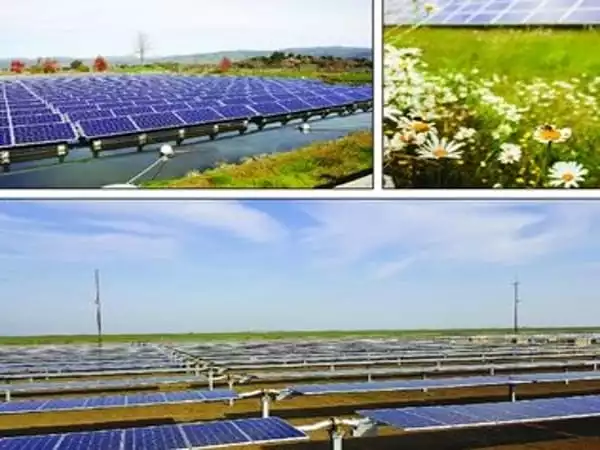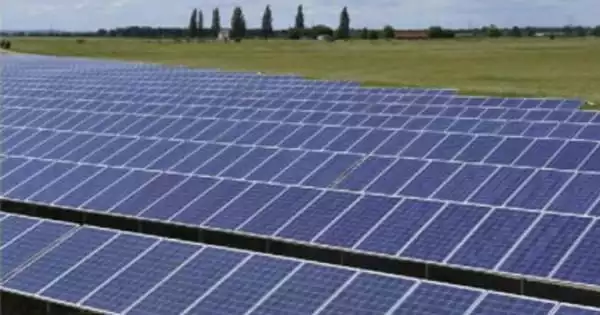According to a study published in the journal Renewable and Sustainable Energy Transition, solar parks could reduce land surface temperature by up to 2.3 degrees Celsius. As more countries pledge to achieve net-zero carbon emissions, renewable energy sources will become more important. However, there is little evidence on the impact of large-scale renewable energy sites on the environment. To fill this void, a group of scientists examined two large-scale solar parks in arid regions of the United States and China. They compared the temperatures around solar parks before and after they were built using land surface temperature data derived from satellite images.
Researchers studying two solar parks in arid areas discovered that they produced ‘cool islands’ that extended 700 meters beyond the solar park boundaries. At 100 meters away from the solar park, the temperature of the surrounding land surface was reduced by up to 2.3 degrees, with the cooling effects decreasing exponentially to 700 meters. This new discovery is significant because it shows that the solar park may have an impact on ecological processes in the surrounding landscape, such as productivity, decomposition, and, ultimately, carbon balance.
Scientists using satellite technologies have discovered for the first time that large scale solar parks have a cooling effect on the land surrounding them.
As more countries pledge to achieve net-zero carbon emissions, renewable energy sources such as wind turbines and solar energy will become more prevalent. However, there is scant evidence on the effects of large-scale solar farms on the local environment. It is therefore critical to comprehend climate impacts because they influence ecological responses.
The scientists from Lancaster University, Ludong University in China, and the University of California Davis in the United States concentrated on two large-scale solar parks in arid areas: the 300 MW Stateline Solar park in California, and the 850 MW Longyangxia solar park in China.

The researchers derived land surface temperature data from Landsat satellite images, a method never before used in solar parks. The research team was able to compare the land surface temperatures around solar parks before and after they were built. Temperature measurements taken on the ground near the Stateline Solar park supplemented the satellite data.
They discovered that the parks created ‘cool islands’ that extended 700 meters beyond the boundaries of the solar parks. The temperature of the surrounding land surface was reduced by up to 2.3 degrees Celsius at 100 meters away from the solar park, with the cooling effects decreasing exponentially to 700 meters.
This new discovery is significant because it shows that the solar park may have an impact on ecological processes in the surrounding landscape, such as productivity, decomposition, and, ultimately, carbon balance. The magnitude of the effect will vary depending on location and could be positive, negative, or insignificant.
Previous research, for example, has shown that lower surface temperatures on the Tibetan Plateau may reduce the amount of methane lost to the atmosphere. Lower temperatures, on the other hand, resulted in fewer seeds germinating in the Mojave Desert, which may mean fewer plants surviving to adulthood, reducing biodiversity.
As a result, the new findings highlight the need for greater consideration to be given to where solar parks are built around the world, as well as their design, in order to minimize negative impacts and boost positive effects.
“Most studies examine the impacts of land-use change for solar parks within the site boundaries,” said Dr. Alona Armstrong, co-lead author from Lancaster University. We discovered a temperature effect that can be seen up to 700 meters away, implying that ecological processes may also be impacted.
“This emphasizes the importance of understanding the implications of renewable energy technologies on the hosting landscape — we need to ensure that the energy transition does not cause undue harm to ecological systems and, ideally, has net positive effects on the places where we build them.”
Although more research is needed to determine the exact mechanisms that cause the cool island effect and how it may vary depending on location and solar park design, the researchers believe it is caused by the shading of the solar array and insulating the land surface, as well as energy being converted into electricity by the solar panels.














